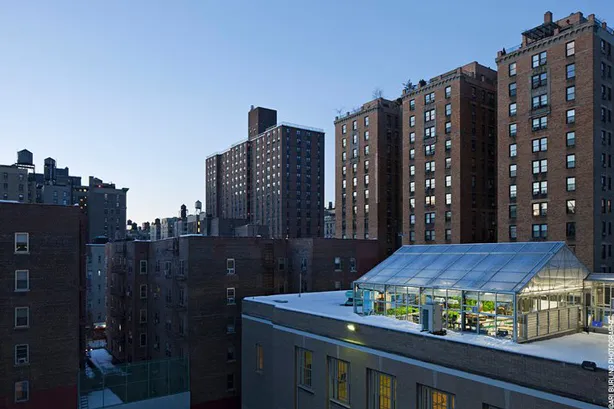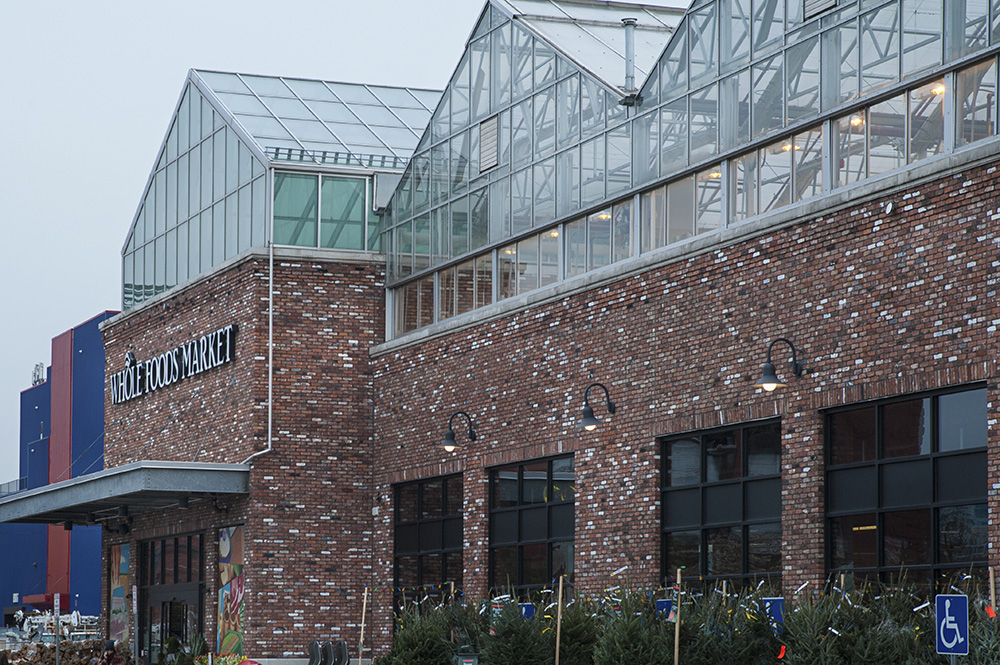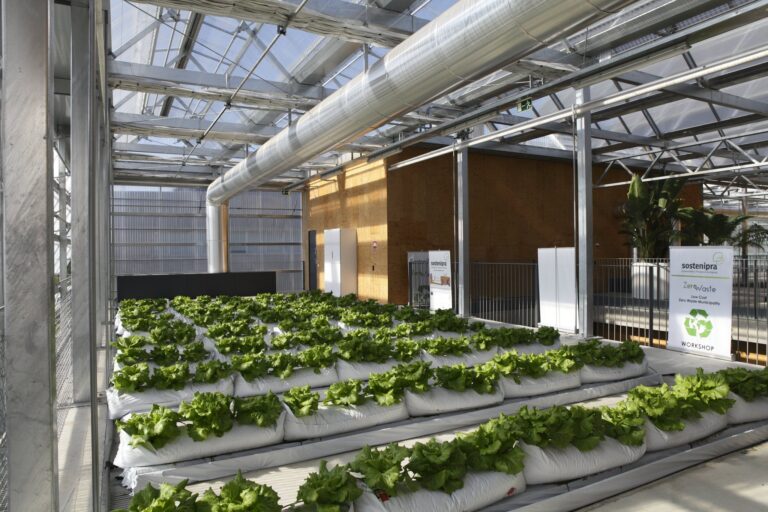I’m on top of a big city with tall buildings all around. It looks like these buildings are trying to touch the sky. But here’s something cool – nature and the city can actually be friends! And that’s what I want to talk about today: greenhouses on rooftops.
The sun is shining, and it’s making all the plants on the rooftop really happy. I’m seeing this for the first time, and I’m amazed at how smart and creative people are to make this happen. These rooftop gardens are like secret treasures in the city. They’re changing the way we live in cities and giving us hope for the planet’s future.
Come along with me as we explore the world of greenhouses on rooftops. It’s a place where plants grow happily in the middle of all the city’s buildings. And where we can see how cities might become more eco-friendly in the future.
Rooftop greenhouses, also known as rooftop gardens, are a sustainable solution for urban agriculture, offering efficient space utilization and controlled environments for plant growth. They provide benefits like energy efficiency, improved air quality, and stormwater management.
However, they require structural modifications, and maintenance, and can be costly. Access and climate control are challenges, but they contribute to greener urban landscapes and community engagement.
Why Is Urban Agriculture Vital for Sustainable Cities?

Urban agriculture plays a pivotal role in the quest for sustainable cities, addressing pressing challenges such as food security, environmental conservation, and community resilience.
Challenges of Traditional Agriculture in Urban Areas
Traditional agriculture faces several challenges in urban areas, such as:
- Limited Space: Urban environments have limited available land for traditional farming, making it difficult to meet the food demand of the growing urban population.
- High Land Costs: The cost of land in cities is often prohibitively high for agricultural purposes, discouraging farming.
- Land Degradation: Urban soils may be contaminated or unsuitable for farming due to pollution and construction activities.
- Transportation Costs: Traditional farms located far from cities result in higher transportation costs, contributing to food miles and carbon emissions.
Increasing Demand for Fresh and Locally Sourced Produce
- Consumer Preferences: Urban consumers are increasingly seeking fresh, locally sourced produce due to its perceived freshness, taste, and support for local economies.
- Reduced Food Waste: Locally grown produce has shorter supply chains, reducing the chances of spoilage during transportation and storage, which aligns with efforts to reduce food waste.
- Food Security: Urban agriculture contributes to greater food security by reducing reliance on long-distance supply chains, which can be vulnerable to disruptions.
Environmental Benefits of Urban Agriculture
- Green Space and Biodiversity: Urban agriculture can enhance green spaces and promote biodiversity in cities, mitigating the urban heat island effect and providing habitats for wildlife.
- Carbon Sequestration: Plants in urban areas absorb carbon dioxide, helping to combat climate change.
- Waste Recycling: Composting and recycling of organic waste in urban agriculture can reduce landfill waste and methane emissions.
- Stormwater Management: Urban farms can capture and filter rainwater, reducing the burden on urban drainage systems.
Transition to Sustainable Food Production
- Resource Efficiency: Urban agriculture can utilize innovative techniques like hydroponics and vertical farming to maximize resource efficiency, requiring less water and land.
- Reduced Chemical Use: Many urban farms employ organic or integrated pest management practices, reducing the need for synthetic chemicals.
- Community Engagement: Urban agriculture fosters a sense of community and educates urban residents about sustainable food production, encouraging more
responsible consumption.
What Drives the Surge in Rooftop Greenhouses?
The soaring popularity of rooftop greenhouses can be attributed to a growing appetite for fresh, locally sourced produce, coupled with a heightened awareness of environmental sustainability.
Definition and Concept of Rooftop Greenhouses
Rooftop greenhouses are enclosed structures built on the rooftops of buildings, designed for the cultivation of plants and vegetables. They typically incorporate advanced climate control systems and sustainable growing techniques.
Benefits of Utilizing Rooftops for Agriculture
Space Optimization: Rooftop greenhouses make efficient use of underutilized urban space, allowing for year-round cultivation.
Energy Efficiency: In addition, they often integrate passive solar heating and natural ventilation, reducing energy consumption compared to traditional indoor farming.
Reduced Food Miles: By growing food where it’s consumed, rooftop greenhouses minimize the distance produce travels, decreasing carbon emissions associated with transportation.
Improved Air Quality: Plants in urban areas help purify the air by absorbing pollutants and emitting oxygen, contributing to better overall air quality.
Success Stories and Case Studies
Urban Areas with Successful Rooftop Greenhouse Projects: Cities like New York, Chicago, and Tokyo have seen the implementation of successful rooftop greenhouse initiatives on commercial and community buildings.
Quantifiable Benefits and Outcomes: Moreover, these projects have shown quantifiable benefits, such as increased local food production, job creation, improved access to fresh produce in food deserts, and reduced greenhouse gas emissions.
What Are The Technical Aspects of Rooftop Greenhouses?
Rooftop greenhouses, a harmonious blend of innovation and horticulture, require meticulous attention to technical aspects like structural integrity, climate control, and efficient resource utilization.
Structural Considerations
Load-Bearing Capacity: Rooftop greenhouses require thorough structural assessments to ensure that the building’s rooftop can support the added weight of the greenhouse, including the structure, growing media, water, and plants. Reinforcements may be necessary to meet safety standards.
Materials and Construction: The choice of materials for the greenhouse structure is critical. Lightweight, durable materials like aluminum and polycarbonate panels are often preferred. Proper construction techniques ensure the greenhouse’s stability and longevity.
Climate Control and Automation
Rooftop greenhouses need advanced climate control systems to maintain optimal growing conditions:
- Temperature Control: Automated heating, cooling, and ventilation systems are crucial for maintaining consistent temperatures, especially in extreme weather conditions.
- Humidity Control: Humidity sensors and misting systems help regulate humidity levels to prevent plant stress and disease.
- Lighting: Rooftop greenhouses often require supplemental lighting, such as LEDs, to provide sufficient light for year-round cultivation, especially in urban environments with limited natural light.
Water Management and Sustainability
- Rainwater Harvesting: Rooftop greenhouses can capture and store rainwater, reducing the need for municipal water supplies.
- Drip Irrigation: Drip irrigation systems with sensors can precisely deliver water to plants, minimizing waste and conserving water.
- Water Recycling: Closed-loop water systems recycle and filter water, reducing overall consumption and maintaining a sustainable water balance.
Crop Selection and Cultivation Techniques
- Crop Suitability: Careful consideration of crop selection is essential. Some crops are better suited for rooftop conditions, taking into account factors like space, light, and temperature.
- Vertical Farming: Techniques like vertical farming and hydroponics maximize space utilization and yield while reducing water consumption.
Integration of Renewable Energy Sources
To enhance sustainability, rooftop greenhouses can integrate renewable energy sources:
- Solar Panels: Installing solar panels on the rooftop or greenhouse structure can provide renewable energy to power climate control systems, lighting, and other greenhouse operations.
- Wind Turbines: In windy urban areas, small-scale wind turbines can supplement energy needs.
How to Overcome Challenges in Rooftop Greenhouse Gardening?

Conquering the heights of rooftop greenhouse gardening necessitates strategic solutions for challenges such as temperature control, weight constraints, and water management.
Economic Feasibility and Initial Investment
Financial Models: Developing business plans and financial models that demonstrate the long-term profitability of rooftop greenhouses can attract investors.
Grants and Subsidies: Seek government grants and subsidies for urban agriculture or sustainability initiatives to offset initial costs.
Regulatory and Zoning Issues
Zoning Regulations: Work with local authorities to address zoning issues and create urban agriculture-friendly zoning regulations.
Permitting: Streamline the permitting process to reduce delays in project implementation.
Maintenance and Operational Challenges
Skilled Workforce: Training and employing a skilled workforce familiar with greenhouse operations and maintenance is crucial for long-term success.
Monitoring Systems: Implement remote monitoring and control systems to efficiently manage greenhouse operations and promptly address any issues.
Public Perception and Community Engagement
Education: Engage in public outreach and education to inform the community about the benefits of rooftop greenhouses, dispelling misconceptions and gaining local support.
Community Participation: Involve the local community in the greenhouse’s activities through volunteer programs, workshops, or farmers’ markets to build a sense of ownership and support.
What Is the Environmental Impact and Sustainability of Rooftop Greenhouses?
Rooftop greenhouses are sowing the seeds of sustainability by reducing food miles, mitigating urban heat islands, and fostering biodiversity.
Reduction in Carbon Footprint
Rooftop greenhouses contribute to reducing the carbon footprint in several ways:
Carbon Sequestration: Plants in the greenhouse absorb carbon dioxide during photosynthesis, acting as carbon sinks and helping mitigate climate change.
Reduced Food Miles: By producing food on-site, rooftop greenhouses significantly reduce the distance that food travels from farm to table, lowering associated carbon emissions.
Energy Efficiency: Modern rooftop greenhouses often employ energy-efficient technologies, such as passive solar heating and LED lighting, which reduce energy consumption and greenhouse gas emissions.
Water Conservation and Responsible Resource Management
Rainwater Harvesting: Capturing and utilizing rainwater for irrigation reduces reliance on freshwater sources, lowering the strain on municipal water supplies.
Closed-Loop Systems: Recycling and treating greenhouse runoff water minimizes water waste and maintains a sustainable water balance.
Integrated Pest Management (IPM): IPM practices in rooftop greenhouses reduce the need for chemical pesticides and promote responsible resource management.
Biodiversity and Urban Ecosystem Enhancement
Habitat Creation: Rooftop greenhouses can serve as habitats for pollinators and urban wildlife, promoting biodiversity in otherwise concrete-dominated environments.
Air and Water Quality: Plants in greenhouses help improve air quality by absorbing pollutants and releasing oxygen, while rooftop gardens aid in stormwater management by capturing and filtering rainwater.
Contribution to the Circular Economy
Waste Reduction: Composting organic waste from rooftop greenhouses closes the loop by converting waste into valuable compost, reducing landfill waste and methane emissions.
Local Food Systems: Rooftop greenhouses strengthen local food systems, promoting circularity by providing fresh produce to nearby residents, restaurants, and businesses.
FAQ’s
Can I put a greenhouse on a flat roof?
Yes, you can put a greenhouse on a flat roof with proper engineering to ensure load-bearing capacity and structural integrity.
What can I use as a roof for a greenhouse?
Transparent materials like polycarbonate panels or greenhouse-grade glass are commonly used as roofs for greenhouses to allow sunlight in.
Can you put a greenhouse on a rooftop?
Yes, rooftop greenhouses are feasible but require structural analysis and reinforcement to support the added weight.
Where should you not put a greenhouse?
Avoid placing a greenhouse in areas with heavy shade, strong wind exposure, or locations prone to flooding.
What is the best surface for a greenhouse?
A level and well-draining surface like gravel, concrete, or pavers is ideal for greenhouse foundations.
What temperature is too hot for a greenhouse?
Temperatures consistently above 100°F (38°C) can be too hot for many plants in a greenhouse, potentially causing heat stress and damage. Adequate ventilation and shading are crucial in such conditions.
Final Words
In conclusion, delving into the multifaceted realm of rooftop greenhouses has been an enlightening journey.
The intricate technical aspects, from structural considerations to climate control, underscore the meticulous planning and execution required to harness the full potential of these urban agricultural marvels.
Moreover, the capacity of rooftop greenhouses to mitigate environmental challenges, such as reducing carbon footprints and promoting responsible resource management, holds immense promise in our quest for a sustainable future.

